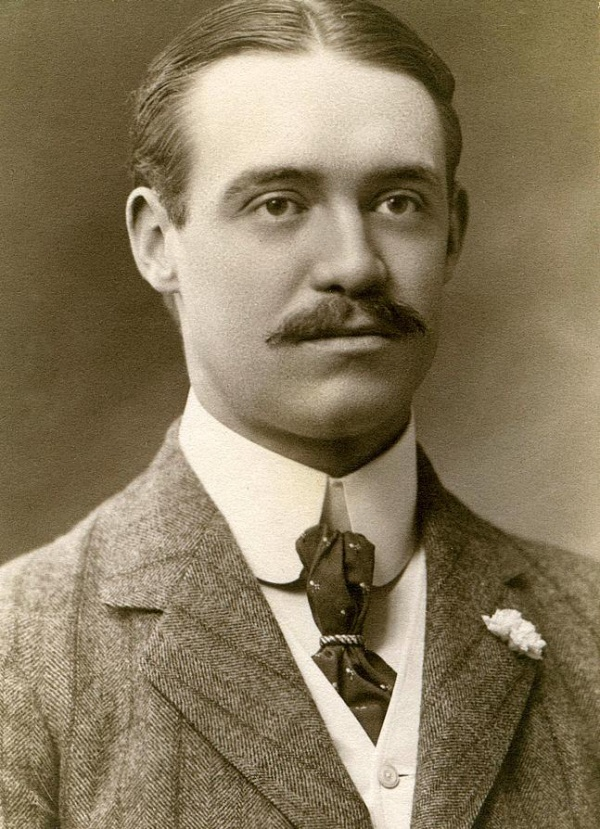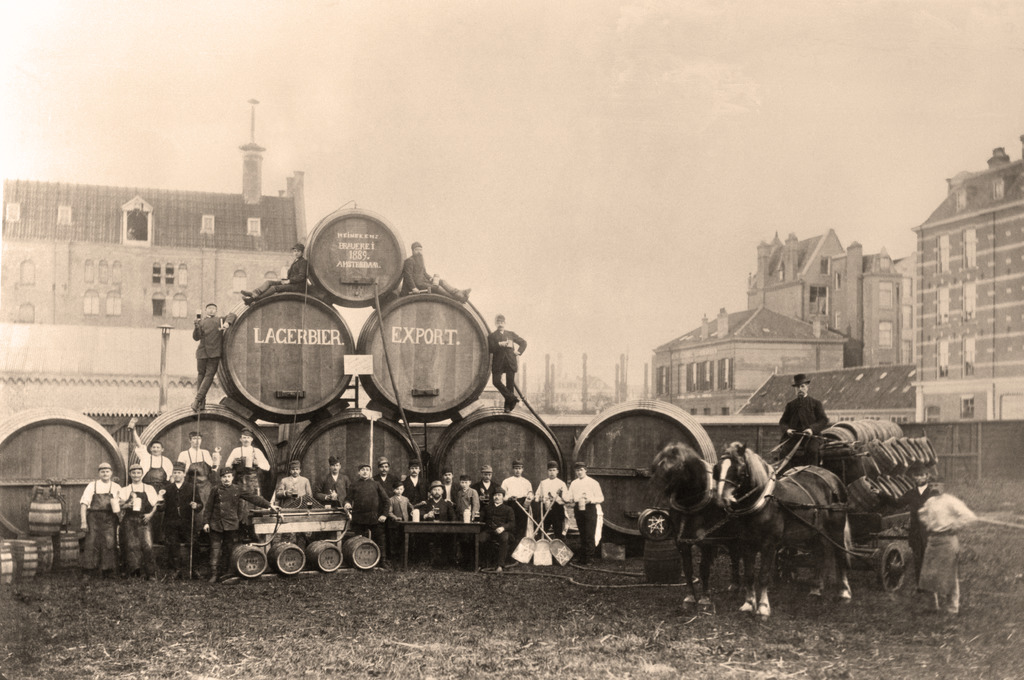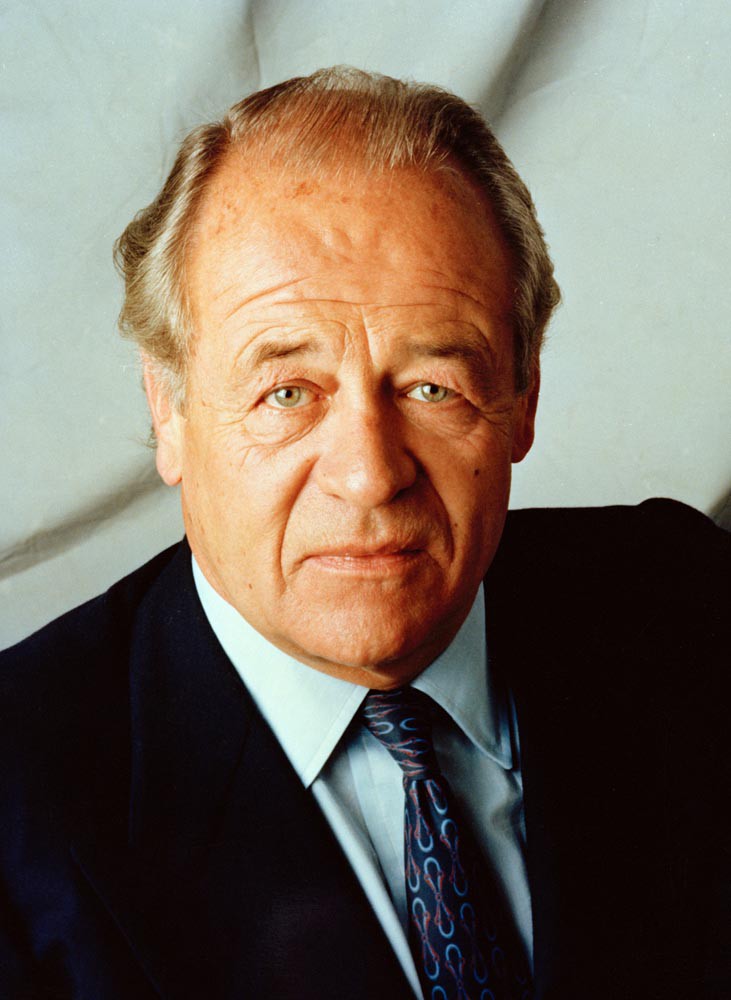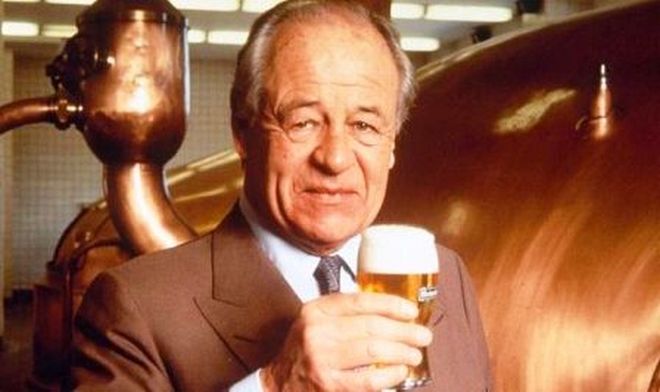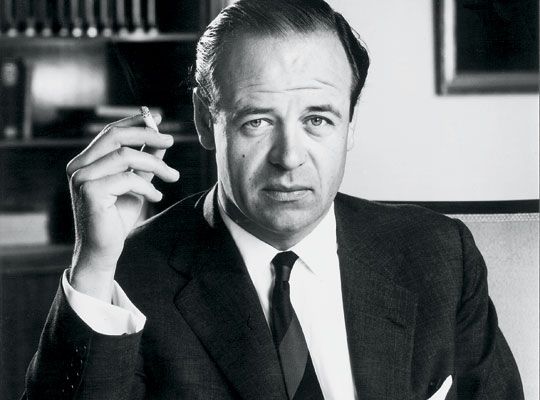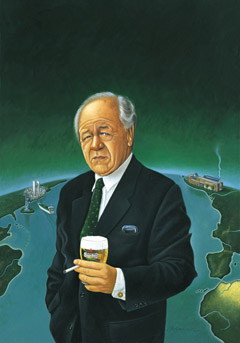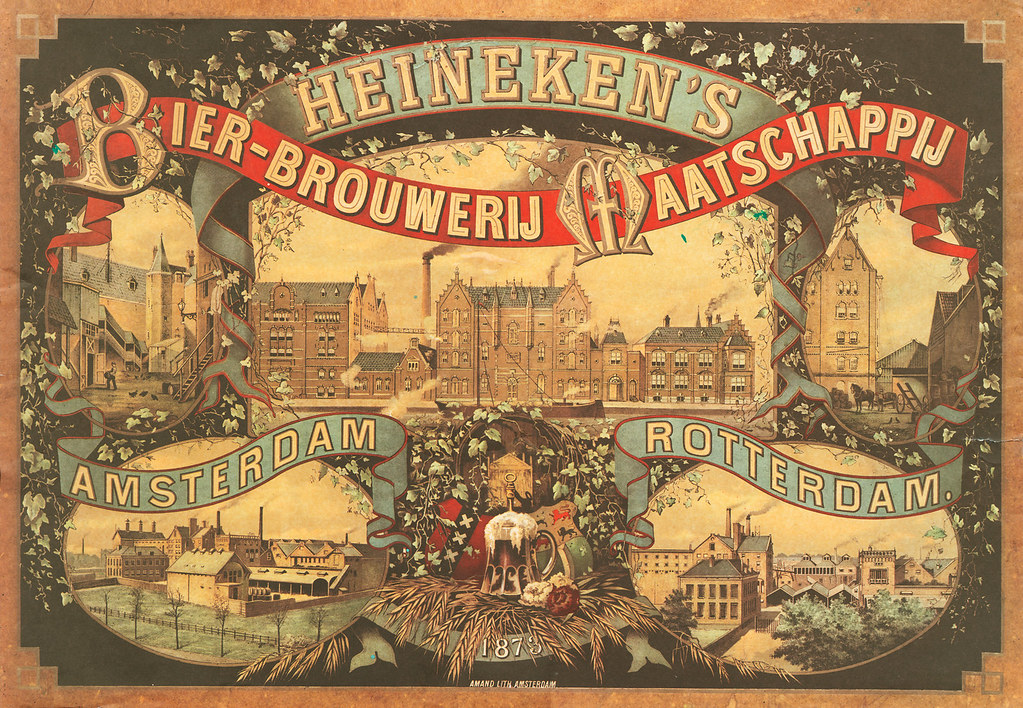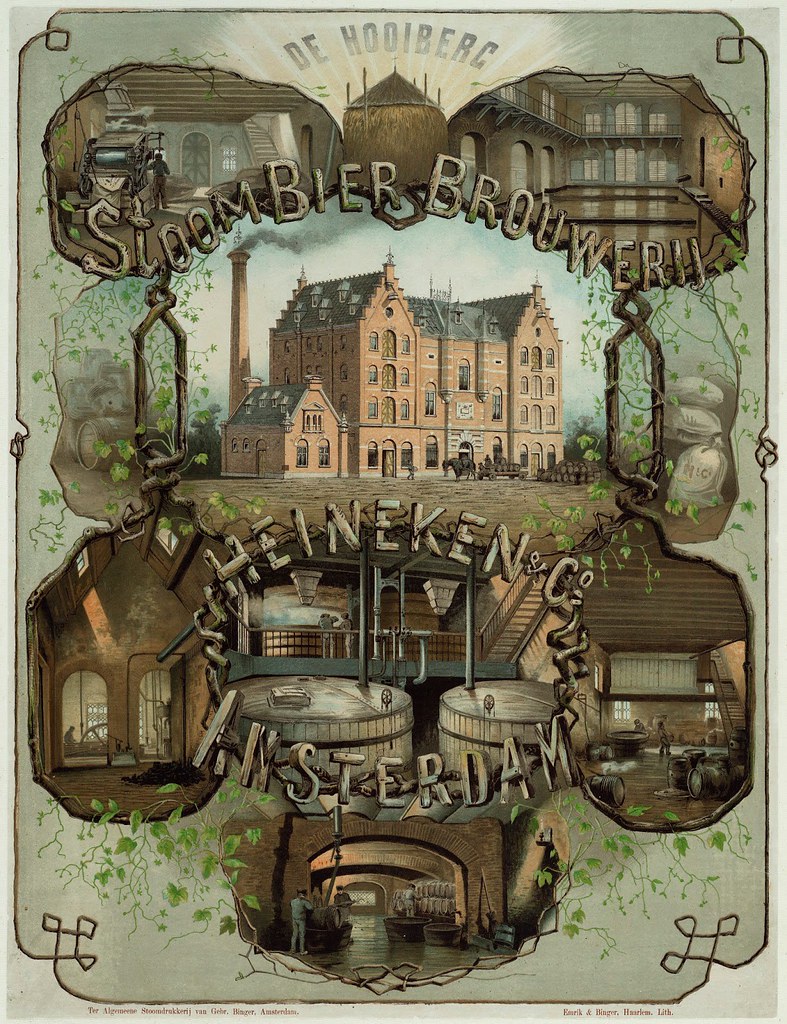
Today is the birthday of Leo Van Munching Jr. (April 7, 1926-February 15, 2016). He was born in Rotterdam, The Netherlands, but moved with his family after prohibition. His father, Leo van Munching Sr. started importing Heineken beer under the name “Van Munching & Co., and he and his son built it into a powerhouse imported beer brand. Sales Agents UK has an overview of their business strategy in a short piece entitled Leo Van Munching – The Story of the US Heineken Mogul.

This is his obituary from the San Francisco Chronicle:
Leo Van Munching Jr., whose stewardship of the importing company started by his father made the Dutch-brewed beer Heineken and its low-calorie sibling, Amstel Light, familiar brand names in the United States, died on Sunday at his home in Darien. He was 89.
The cause was heart failure, his son Philip said.
Heineken, which was first brewed in the 19th century, was the first European beer to be shipped to this country after the end of Prohibition. It was Mr. Van Munching’s father, Leo van Munching (the father preferred the lowercase v, the son the uppercase V), who recognized the business opportunity, and persuaded Heineken executives to allow him to represent the brand in the United States.
He arrived from the Netherlands with 50 cases of beer and his young family shortly after the repeal in December 1933 of the 18th amendment to the Constitution that had banned the manufacture and sale of alcoholic beverages. Earlier that year, President Franklin D. Roosevelt had signed the Beer and Wine Revenue Act that legalized (and taxed) beverages containing no more than 3.2 percent alcohol. “I think this would be a good time for beer,” the president declared.
Exports from the Netherlands were curtailed a few years later during World War II, but in 1946, the elder Mr. van Munching established Van Munching and Company as the lone American distributor of Heineken products.
Spurred by the beer’s popularity among American soldiers, who had enjoyed it in Europe, and by an advertising campaign that underscored its cachet as a foreign beer, sales were brisk. In 1951, The New York Times reported that sales of Heineken in the United States totaled more than 4.6 million bottles, an increase of 49 percent from 1950, a period when beer sales as a whole increased by only 1.2 percent.
That was just about the time that the younger Mr. Van Munching went to work for the company, shortly after graduating from college in 1950. He worked closely with his father for a quarter-century, establishing regional offices and, through advertising and marketing, helping to lift American recognition of the Heineken brand.
The Van Munching name grew in prominence as well, largely because of radio ads for Heineken that closed with an announcer saying: “Imported by Van Munching and Company, New York, New York.” By the mid-1970s, Leo Jr. was running day-to-day operations; he was officially named president in 1980.
By then, Heineken had been the best-selling imported beer in America for eight years, and according to Advertising Age, in 1979, it accounted for a whopping 41 percent of all imported beer sales in the country. Under Mr. Van Munching, the family company introduced other brands to the United States (including Grizzly, a Canadian-brewed beer, whose radio ads featured a not terribly well-known comedian named Jerry Seinfeld).
But perhaps more significantly, he increased Heineken product sales: He persuaded Heineken, which had bought the Amstel brewery, then in Amsterdam, in 1968, to begin producing a low-calorie beer for export; it arrived in the United States as Amstel Light in the early 1980s, initially marketed with women as a target.
Beginning in the mid-1970s, he marketed Heineken with television advertising for the first time, focusing on the beer’s distinctive green bottle and a slogan promoting its documented popularity: “America’s No. 1-selling imported beer.”
By the late 1980s, fending off a challenge from Mexican beers that were being marketed to younger drinkers — by then, the decade had minted (and named) a new demographic, yuppies, who gravitated to trendy imports — Heineken changed its advertising direction, which was focused by a tagline: “When you’re done kidding around, Heineken.”
Mr. Van Munching sold his company to Heineken in the early 1990s (he ran it for them until 1993), and when he left, it was still the leading American import. By 1997, however, Heineken had yielded the top spot to Corona Extra. As of 2015, it had yet to reclaim it.
Mr. Van Munching was born in Rotterdam, the Netherlands, on April 7, 1926. His father had been a ship’s steward for the Holland/America cruise line before he began importing beer. His mother was the former Maria Molt.
The family lived in Weehawken, N.J., where Mr. Van Munching attended high school. He joined the Navy, serving in Hawaii at the end of World War II. Afterward, he studied business and management at the University of Maryland on the G.I. Bill of Rights.
In later years, among his many philanthropic donations were gifts totaling $11 million to his alma mater, where Van Munching Hall is the home of the Robert H. Smith School of Business.
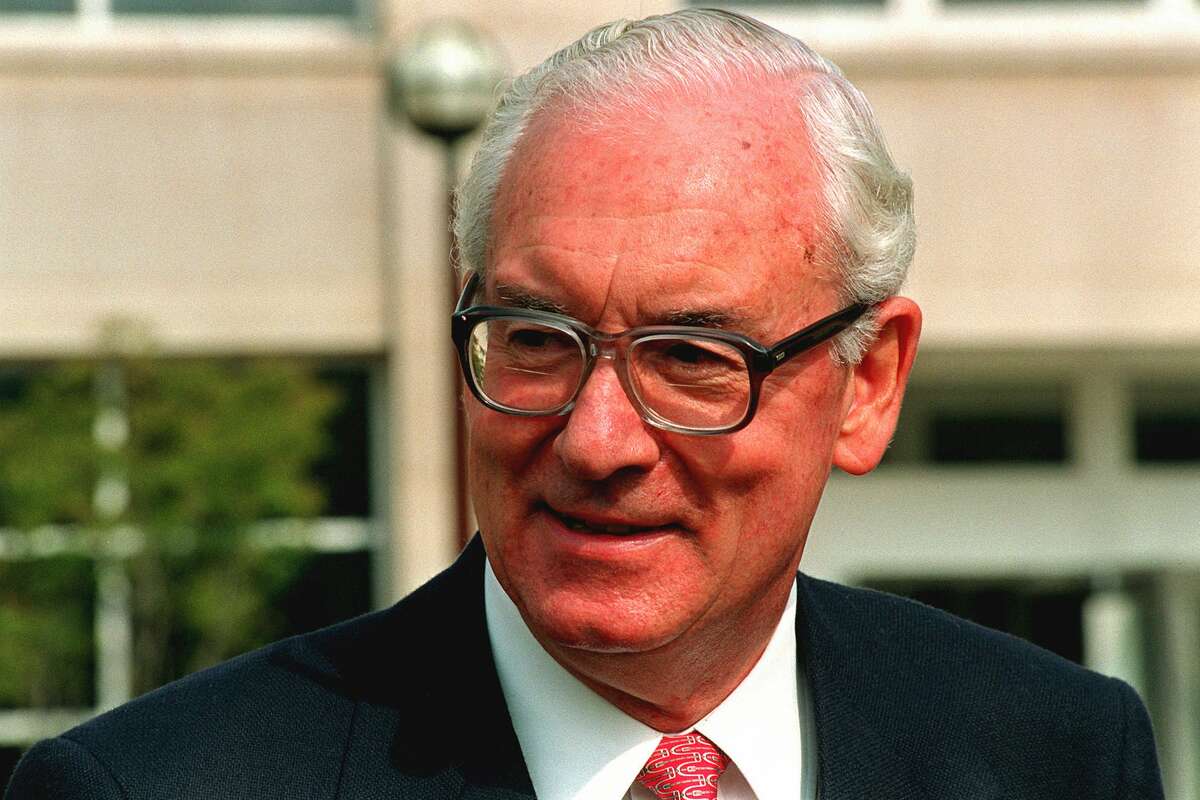
And this obituary is from his hometown paper of Darien, Connecticut, the Darien Times:
Leo Van Munching, Jr., who guided Heineken’s decades-long dominance in the US imported beer market, died February 14th after a long illness. The Darien resident was 89.
Born in 1926 in Rotterdam, the Netherlands, Leo and his family immigrated to the United States upon the repeal of Prohibition in 1933. His late father, Leo, Sr., came as a representative of the Heineken brewery and eventually established the independent Van Munching & Company as the sole US importer of Heineken brands.
Leo served as a ‘Seabee’ in the 35th Special Naval Construction Battalion on Oahu, Hawaii from 1944 to 1946. Upon discharge from the Navy, he enrolled in the University of Maryland on the G.I. Bill, earning a degree from the College of Business and Management in 1950.
He then went to work for Van Munching & Company, establishing regional offices in major markets around the country and developing both the brand imagery and the distribution network that led to Heineken’s preeminence in the expanding imported beer segment. He married Margaret (Peggy) Pratt in 1953, and moved his quickly growing family to Chicago and Los Angeles before settling in Connecticut, where he took over as president of Van Munching & Company. He remained in that role until his retirement in 1993.
During his time with Van Munching & Company, no other brand approached Heineken’s position as the largest-selling imported beer. After cajoling the Heineken Brewery to create a low-calorie version of its Amstel brand, Leo guided Amstel Light to the top sales spot in the imported light beer segment.
In recognition of his outstanding contributions and personal dedication to US-Netherlands trade relations, and his promotion of goodwill for the Netherlands in the United States, the Dutch government honored him with The Order of Orange-Nassau in 1982. Six years later, the Netherlands Chamber of Commerce in the US also recognized his role in the expansion of trade between the two countries, presenting him with the George Washington Vanderbilt Award.
Leo’s efforts as a philanthropist – often anonymous – were substantial and far-reaching. Many of his contributions were made out of appreciation for the opportunities he and his family enjoyed in America. He became involved in the restoration of the Statue of Liberty in honor of his mother, Mia, who he said was greatly affected by seeing the statue as an arriving immigrant.
He donated Van Munching Hall, home of the University of Maryland’s Robert H. Smith School of Business, in part to thank the university for its kind treatment of the veterans of World War II. In addition to building the home for the University of Maryland’s business school, Leo was a member of the school’s Dean’s Advisory Council, an honorary trustee of the University of Maryland College Park Foundation Board, and in 2012, was given the Tyser Gottwals Award in honor of his outstanding service to the university.
Leo’s fervent commitment to supporting education led him to a long-standing relationship with Kolbe Cathedral High School in Bridgeport. His support of that school, both as a benefactor and member of the Advisory Board, prompted the Diocese of Bridgeport to honor him with the Order of St. Augustine Medal of Service in 2012. He and Peggy were also strong supporters of the St. Margaret Mary School in the Bronx.
Closer to home, Leo and Peggy established the Van Munching Rehabilitation Unit at Stamford Hospital, which helps people with chronic or disabling illnesses or injuries restore their mobility and independence. The excellent care he received at the New York Hospital/Cornell Medical Center prompted Leo to make a founding donation to the Margaret M. Dyson Vision Research Institute. Leo was also a leadership donor to the construction of the new Darien Library, which opened in 2009. He was an active supporter of several Darien-based charities, and a member of the Wee Burn Country Club.




